
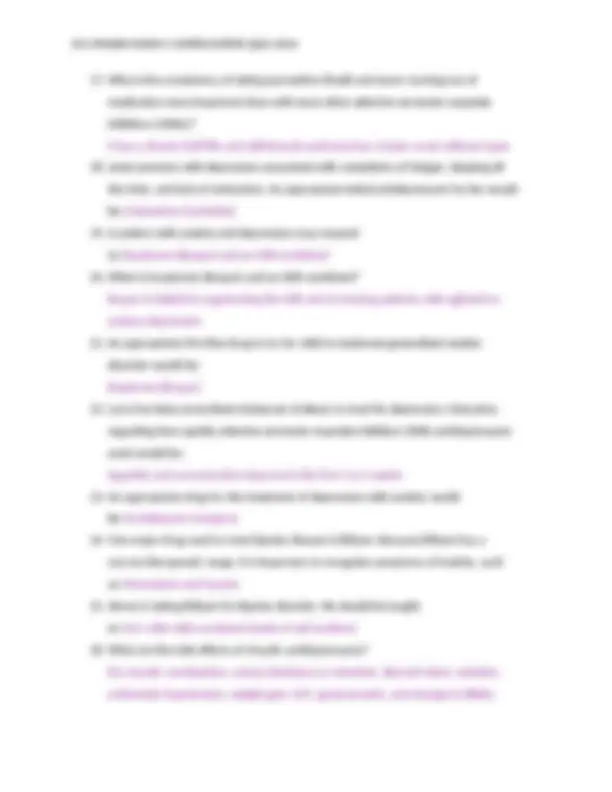
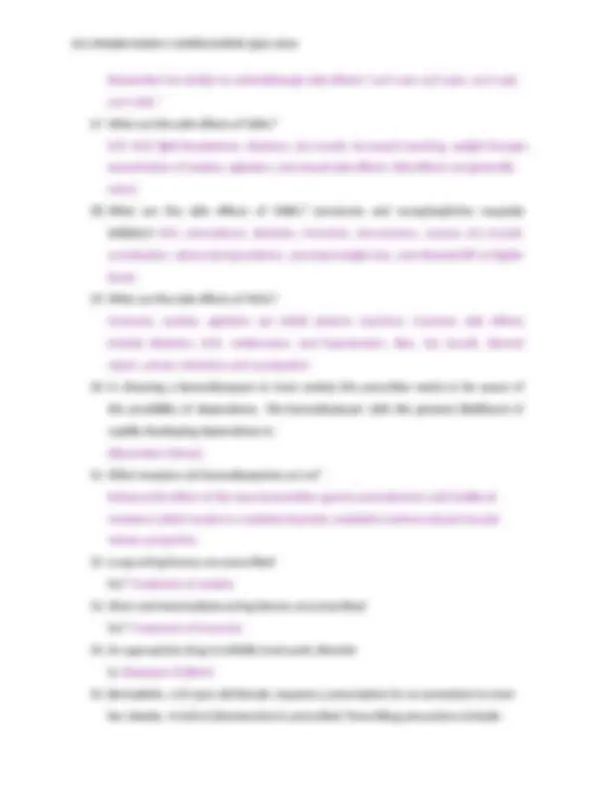
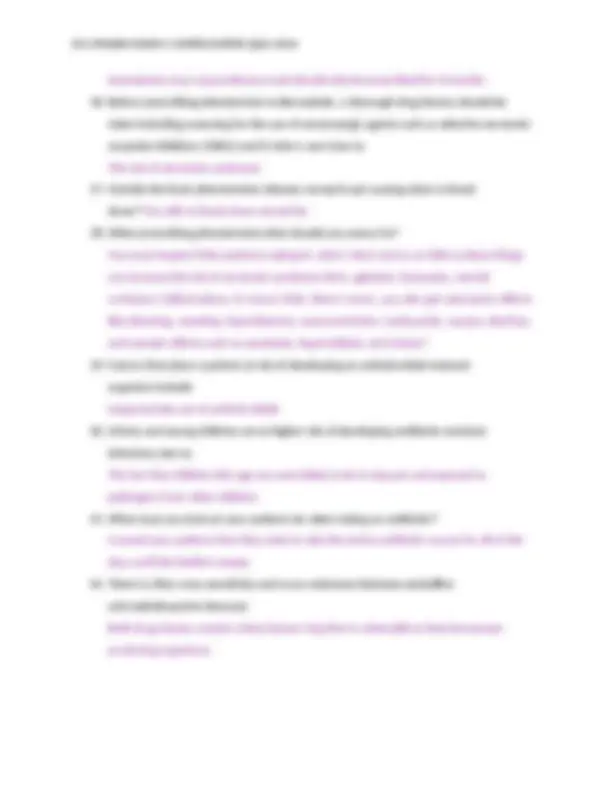
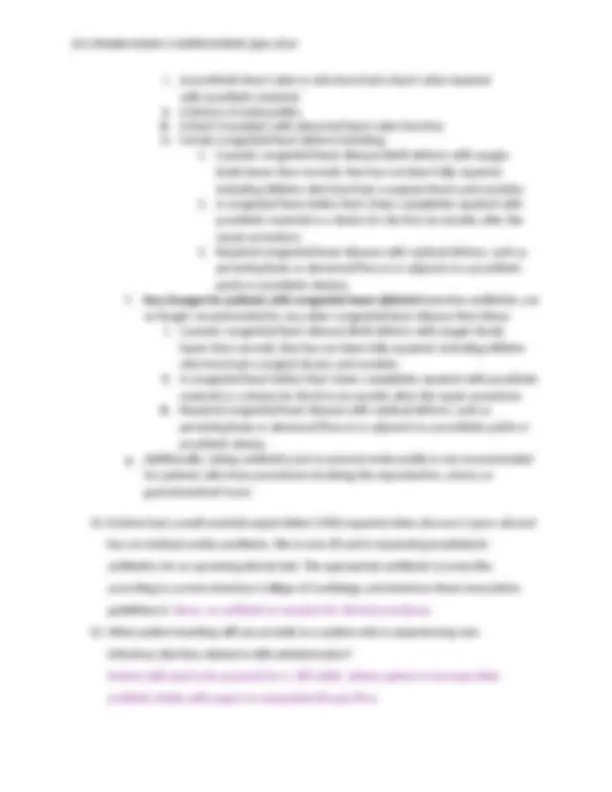
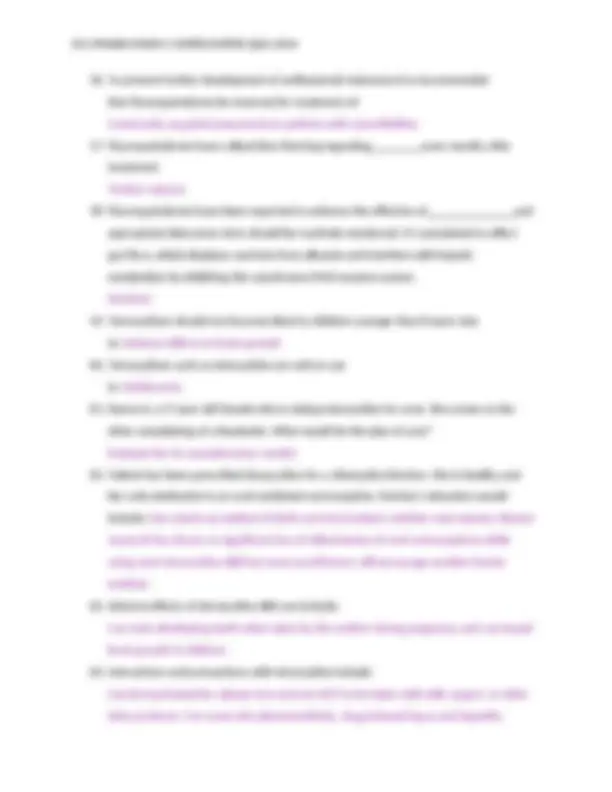
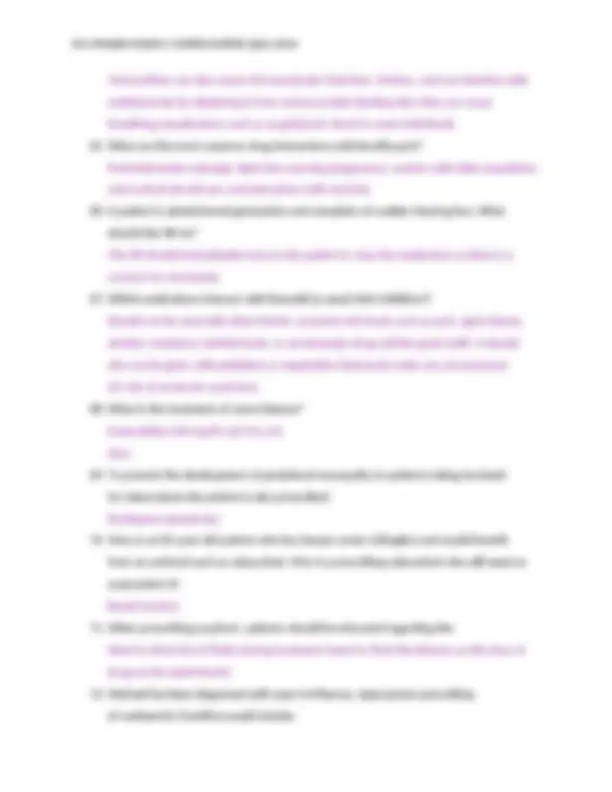


Study with the several resources on Docsity

Earn points by helping other students or get them with a premium plan


Prepare for your exams
Study with the several resources on Docsity

Earn points to download
Earn points by helping other students or get them with a premium plan
Community
Ask the community for help and clear up your study doubts
Discover the best universities in your country according to Docsity users
Free resources
Download our free guides on studying techniques, anxiety management strategies, and thesis advice from Docsity tutors
A comprehensive set of questions and answers covering various aspects of pharmacology, particularly focusing on medications used for treating seizures, depression, anxiety, and bipolar disorder. It also includes sections on antimicrobial resistance and antibiotic use. Valuable for students studying pharmacology, as it offers a structured approach to understanding key concepts and clinical applications of different drug classes.
Typology: Quizzes
1 / 12

This page cannot be seen from the preview
Don't miss anything!







Valproate is a known teratogen, but may be taken after the first trimester if necessary. Keppra is a better drug to be on until the second trimester, then she can go back to valproate.
Remember it is similar to anticholinergic side effects-“can’t see, can’t pee, can’t spit, can’t shit.”
Anorexiants may cause tolerance and should only be prescribed for 6 months
i. A prosthetic heart valve or who have had a heart valve repaired with prosthetic material. ii. A history of endocarditis. iii. A heart transplant with abnormal heart valve function iv. Certain congenital heart defects including:
Tetracyclines can also cause microvassicular fatty liver, tinnitus, and can interfere with methotrexate by displacing it from various protein binding sites they can cause breathing complications such as anaphylactic shock in some individuals.
Starting oseltamivir within the first 48 hours of influenza symptoms